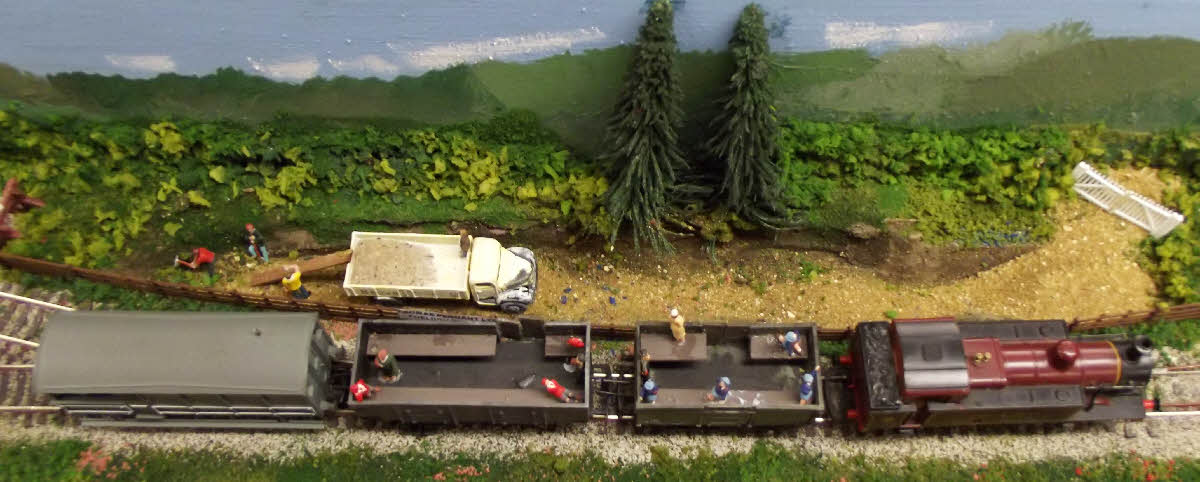
Tal-y-bont
Back ground
Back to Tal-y-Bont
Below is an article about how I intended to model Tal-y-bont. In the end
I changed the quarry to
a sandpit and swooped the position of the loader and platform to allow
longer passenger trains.
Having gained operating experience with
Skovdallund
and
San Rocco
I've decided the concept of having a fiddle yard board, throat
board, and scenic board with different prototypes, so far Danish and
Italian, has worked and the next board and prototype will be a
British
1973-4
industrial and preservation terminus. I've mixed and matched from
the
Derwent Valley [Light] Railway, Middleton Railway, the proposed
Abbey, Dolgarrog, and Trefriw Light Railway
and thrown in a preservation group.

HISTORY Between the 1850’s and 1910’s there were plans to build a railway from Conway along the Vale of Gyffin, then via Dolgarrog and Trefriw on the western side of the Conway Valley to Llanrwst. The only outcome was a short light railway build to service the Aluminium plant at Dolgarrog. I have rewritten history with the proposal in 1908 of the 10.5 mile long Abbey, Dolgarrog & Trefriw Light Railway approved in 1910 by the Dolgarrog Light Railway Order coming to fruition and like the Derwent Valley [Light] Railway being neither grouped (1923) nor nationalised (1948). In 1926 regular passenger services were withdrawn but workman’s trains continued to stop at the railway’s low platforms until 1932. Goods traffic was largely and by the 1950’s wholly moved in mainline goods wagons. In 1960 the Aluminum plant at Dolgarrog, switched to road transport and the railway between Tal-y-bont and Llanrwst closed. In 1969 the railway broke with tradition and replaced its hired locomotives with two diesel locos bought from British Rail. 1971 bought a preservation group who carried passengers in brake vans and converted open wagons. The layout is set in 1973-4 during the introduction of the TOPS. The light railway continues to run goods trains for outward bound timber in 16 ton mineral wagons and aggregate in TOPS coded tipplers. The preservation group runs passenger service weekends bank holidays and summer weekdays. The preservationists built a carriage shed, halt and picnic area.

I've included the Middleton Railway in the mix as unusually possibly
even uniquely it was a goods rather than passenger railway in its first decade.
Similarly the
the
Derwent Valley Light Railway ran a good service till closure. These give
a rational for a goods service and some enjoyable shunting. Using brake
vans and converted open wagons for the passenger service was driven
partly by availability of stock, partly by the desire for shunting, and
partly to avoid, as happens on several small preservation lines,
operation by a single train shuttling up and down the line.

The quarry as it exists the halt and picnic area will be to the left and
the hard standing for wagon loading on the right.